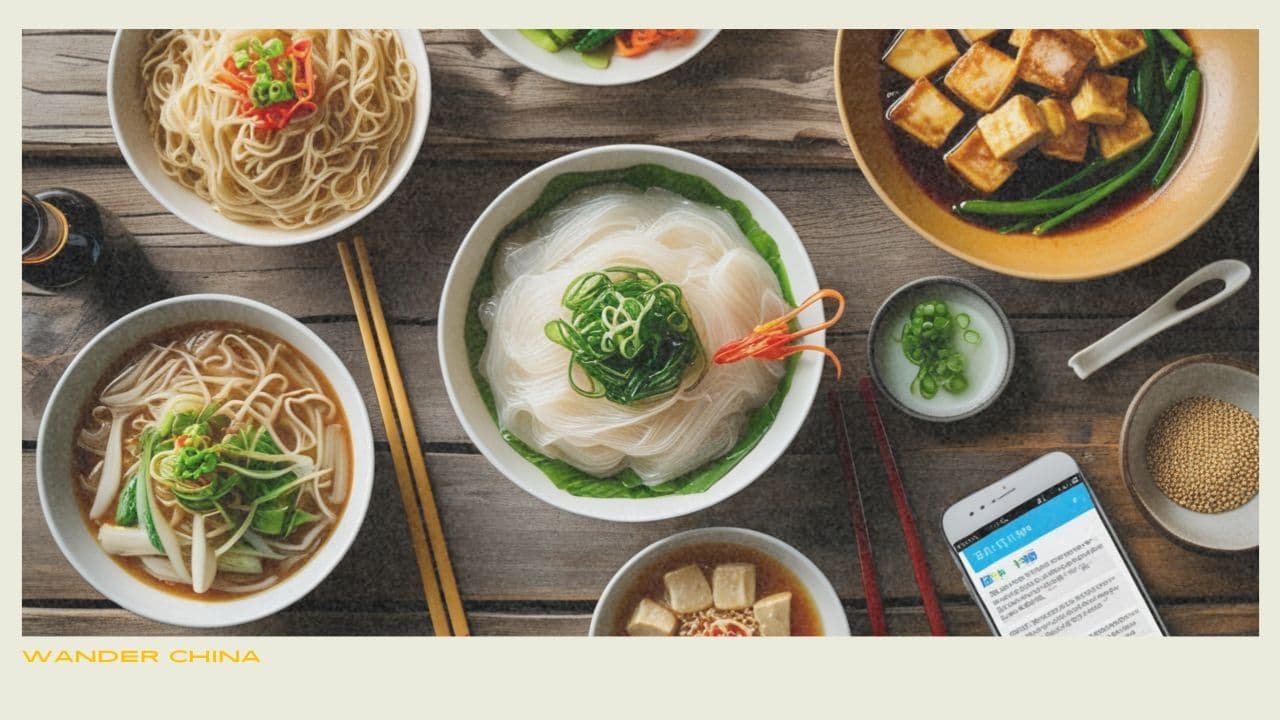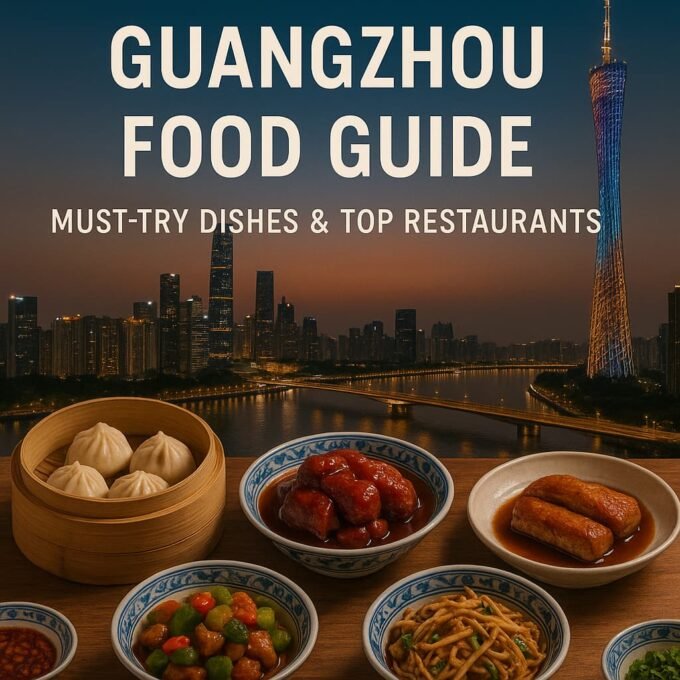2025 Guide to Top Gluten‑Free Food Options and Tips in China
Discover how to navigate a gluten‑free diet in China.

Key Highlights
- Rapidly growing interest in gluten‑free diets across China’s major cities
- Top naturally gluten‑free Chinese dishes and easy substitutions
- Essential tips for safe dining and avoiding cross‑contamination
- Where to shop: apps, supermarkets, and online platforms
- Future trends: certification, local brands, and dedicated eateries
What is Gluten?
Gluten is a protein composite found in grains like wheat, barley, rye, and triticale. It acts as a binding agent, giving dough its elastic texture and allowing baked goods to rise and maintain their shape. Gluten is present in many staple foods, including bread, pasta, cereals, and pastries.
Some people avoid gluten due to celiac disease, an autoimmune disorder where gluten triggers an immune response that damages the small intestine. Others may have non-celiac gluten sensitivity, experiencing digestive issues or other symptoms after consuming gluten. Following a gluten-free diet is necessary for those with celiac disease and can alleviate symptoms for those with gluten sensitivity.
Major sources of gluten include wheat-based products like bread, pasta, crackers, and baked goods, as well as foods containing barley or rye. Gluten can also be found in sauces, condiments, and processed foods due to added ingredients or cross-contamination during manufacturing.
Gluten-Free Diets in China
Gluten-free diets have been gaining traction in China in recent years, driven by rising awareness of celiac disease and gluten intolerance. While the prevalence of celiac disease in China is relatively low compared to Western countries, estimated at around 0.6% of the population, the sheer size of China’s population means that a significant number of individuals are affected.
Traditionally, the concept of gluten intolerance or sensitivity has been largely unfamiliar in Chinese culture. However, as more people become educated about the potential health benefits of a gluten-free lifestyle, the demand for gluten-free options has steadily increased, particularly in urban areas.
Cultural attitudes towards gluten-free diets in China have been evolving. Initially, there was skepticism and a lack of understanding surrounding the need for such dietary restrictions. Many viewed gluten-free as a passing fad or a Western trend with little relevance to traditional Chinese cuisine. However, as more individuals experience the positive effects of eliminating gluten from their diets, the perception has gradually shifted.
In recent years, the Chinese government and healthcare authorities have taken steps to raise awareness about celiac disease and gluten intolerance. Educational campaigns and initiatives have been launched to inform the public about the potential health risks associated with gluten consumption for those with sensitivities or intolerances.
Despite the growing acceptance, navigating a gluten-free lifestyle in China can still be challenging, as the concept is relatively new and not yet fully mainstream. However, the increasing demand for gluten-free options has prompted restaurants, bakeries, and food manufacturers to adapt and cater to this growing market segment.
Naturally Gluten‑Free Chinese Dishes
| Dish Category | Examples | Notes |
|---|---|---|
| Rice Dishes | Steamed rice, Congee (rice porridge) | Base for flavorful toppings |
| Rice Noodles | Guilin rice noodles, Liangpi (cold noodles) | Often served in broths or salads |
| Stir‑Fries | Vegetable/Meat stir‑fries (no soy sauce) | Request gluten‑free soy sauce or tamari |
| Dim Sum Alternatives | Har gow, Shumai (made with rice flour) | Verify wrappers; ask for tapioca‑based versions |
| Hot Pot | Broths + veggies, tofu, meats | Choose clear broths; avoid wheat‑based dipping sauces |
| Steamed Dishes | Steamed fish, chicken, vegetables | Naturally free of wheat; confirm no sauce adds |
Traditional Chinese Cuisine and Gluten
Traditional Chinese cuisine is heavily reliant on wheat-based ingredients, making it a challenging culinary landscape for those following a gluten-free diet. Common gluten-containing ingredients in Chinese cooking include:
- Soy sauce: A staple condiment made from fermented soybeans and wheat.
- Oyster sauce: Derived from oyster extracts and wheat flour.
- Wheat noodles: A variety of noodles, such as lo mein, chow mein, and lamian, are made from wheat flour.
- Dumplings and buns: Iconic dishes like jiaozi (dumplings) and baozi (steamed buns) feature wheat-based dough.
- Breading and batters: Many fried dishes are coated in wheat-based batters or breadcrumbs.
However, not all traditional Chinese dishes contain gluten. Naturally gluten-free options include:
- Rice dishes: Steamed rice, congee (rice porridge), and rice noodles are gluten-free.
- Stir-fries: Vegetable and protein-based stir-fries without sauces or thickeners can be gluten-free.
- Hot pot: This communal cooking style often features gluten-free broths and ingredients.
- Steamed dishes: Steamed fish, chicken, and vegetables are typically gluten-free.
- Dim sum: Some dim sum items, like har gow (shrimp dumplings) and shumai, can be made with rice flour or tapioca starch.
While traditional Chinese cuisine presents challenges for those on a gluten-free diet, with careful ingredient selection and modifications, it is possible to enjoy flavorful and authentic Chinese dishes without gluten.
Gluten‑Free Ingredient Substitutes
| Traditional Ingredient | Gluten‑Free Swap | Usage Tip |
|---|---|---|
| Soy sauce | Tamari, Coconut aminos | Use 1:1 ratio; add extra water if too salty |
| Wheat noodles | Rice, Mung bean, Sweet potato noodles | Check cooking time; rinse after boiling |
| Wheat flour | Rice flour, Tapioca starch, Potato starch | Mix flours for better texture in baking |
| Oyster sauce | GF hoisin or DIY blend (mushroom + tamari) | Thicken with cornstarch or rice flour |
| Breaded coatings | Rice panko, Crushed nuts | Press firmly for even coating |
Challenges of Finding Gluten-Free Food in China
For those following a gluten-free diet, navigating the culinary landscape in China can be a daunting task. One of the primary challenges lies in the language barrier. Many restaurant staff and food vendors may have limited understanding of gluten-free dietary requirements, making it difficult to communicate your needs effectively. Even with translation apps or phrasebooks, the nuances of gluten-free can be lost in translation.
Another significant hurdle is the lack of clear labeling on packaged foods. Unlike in many Western countries, where gluten-free labeling is more prevalent, identifying gluten-containing ingredients in Chinese products can be a guessing game. Soy sauce, a ubiquitous condiment in Chinese cuisine, often contains wheat, making it a potential source of gluten contamination.
Cross-contamination risks are also a concern when dining out in China. Many restaurants use shared cooking surfaces, utensils, and oil, increasing the chances of gluten exposure. Even dishes that appear gluten-free may have been prepared alongside gluten-containing items, leading to unintentional contamination.
Dining out in China can be particularly challenging for those on a gluten-free diet. Traditional Chinese cuisine heavily relies on wheat-based ingredients like noodles, dumplings, and breads. Communicating dietary restrictions to restaurant staff and ensuring safe preparation methods can be an uphill battle, especially in smaller, family-run establishments or street food vendors.
Where to Shop: Retail & Online Sources
| Channel | Examples | Tips |
|---|---|---|
| Supermarkets | City Shop, Ole’, Metro | Imported items; higher price point |
| Health Food Stores | Local organic markets, health shops | Look for dedicated “无麸质” (no‑gluten) sections |
| Online Platforms | Taobao, JD.com, iHerb | Read reviews; check “无麸质认证” (GF certification) |
| Specialty Apps | “Find Me Gluten Free” (expat‑oriented) | Crowd‑sourced reviews of restaurants and shops |
Gluten-Free Alternatives in Chinese Cuisine
Chinese cuisine offers a wealth of naturally gluten-free ingredients and dishes that can be enjoyed by those following a gluten-free diet. While wheat-based products like noodles, dumplings, and breads are prevalent, there are many delicious alternatives available.
Substitutes for Wheat-Based Ingredients
One of the primary challenges in adapting Chinese dishes to be gluten-free is finding substitutes for wheat-based ingredients like soy sauce, oyster sauce, and wheat noodles. Fortunately, there are several options:
- Tamari or coconut aminos can replace traditional soy sauce, providing a similar umami flavor without gluten.
- Rice noodles, mung bean noodles, and sweet potato noodles are excellent gluten-free substitutes for wheat noodles in soups, stir-fries, and noodle dishes.
- Rice flour, tapioca flour, and potato starch can be used in place of wheat flour for baking or thickening sauces.
Gluten-Free Chinese Recipes
Many traditional Chinese dishes are naturally gluten-free or can be easily adapted with minor substitutions. Here are some popular gluten-free options:
- Steamed or stir-fried vegetables with garlic, ginger, and gluten-free soy sauce
- Fried rice made with rice noodles or cauliflower rice
- Lettuce wraps with minced meat or tofu filling
- Hot and sour soup made with rice vinegar and gluten-free soy sauce
- Congee (rice porridge) with various toppings like century eggs, pickled vegetables, or shredded meat
Gluten-Free Versions of Popular Dishes
While some traditional Chinese dishes are inherently gluten-free, others can be adapted to accommodate a gluten-free diet. Here are some examples:
- Gluten-free dumplings or potstickers made with rice flour or tapioca starch wrappers
- Kung Pao chicken or beef made with gluten-free soy sauce and rice flour for thickening
- Moo shu vegetables or protein wrapped in gluten-free tortillas or lettuce leaves
- Sweet and sour dishes made with gluten-free soy sauce, rice vinegar, and cornstarch for thickening
- Gluten-free spring rolls or egg rolls with rice paper wrappers
By exploring these gluten-free alternatives and recipes, those following a gluten-free diet can still enjoy the vibrant flavors and diverse dishes of Chinese cuisine.
Gluten-Free Grocery Shopping in China
Finding gluten-free groceries in China can be a challenge, but the situation is gradually improving. In major cities like Beijing, Shanghai, and Guangzhou, international supermarkets and specialty stores are making it easier to find gluten-free products.
Availability in Supermarkets
Large supermarket chains like City Shop, Ole’, and Metro have started carrying a decent selection of gluten-free items, primarily imported from Western countries. These include gluten-free bread, pasta, cereals, snacks, and baking mixes. However, the selection can be limited, and prices are often higher than regular products.
Online Shopping
Online shopping has made it more convenient to access a wider range of gluten-free products in China. Platforms like Taobao, JD.com, and iHerb offer a variety of gluten-free items, including hard-to-find specialty products. However, it’s essential to read labels carefully and ensure the products are genuinely gluten-free, as some listings may be inaccurate or misleading.
Imported vs. Local Brands
Most gluten-free products available in China are imported from countries like the United States, Australia, and European nations. These imported brands are generally more reliable in terms of gluten-free certification and labeling. However, they can be expensive due to import taxes and shipping costs.
Local Chinese brands are slowly catching up and offering gluten-free options, but the selection is still limited. It’s crucial to carefully check ingredient lists and certifications, as the understanding of gluten-free standards may vary.
Health Food Stores and Markets
In addition to supermarkets, health food stores and specialty markets in larger cities often carry a decent selection of gluten-free products. These stores may offer a wider variety of gluten-free flours, baking mixes, and snacks, catering to the growing demand for gluten-free options.
While the availability of gluten-free groceries in China is improving, it still requires diligent label reading, research, and sometimes a bit of creativity. With patience and persistence, it is possible to find suitable gluten-free options for maintaining a gluten-free lifestyle in China.
Gluten-Free Restaurants and Bakeries in China
China’s major cities are gradually embracing the gluten-free trend, with dedicated restaurants and bakeries catering to those on a gluten-free diet. While still a niche market, the increasing demand for gluten-free options has prompted several establishments to offer safe and delicious alternatives.
Dedicated Gluten-Free Restaurants
In cities like Beijing, Shanghai, and Guangzhou, a handful of restaurants have emerged that are entirely gluten-free. These establishments take great care to ensure a safe dining environment for those with celiac disease or gluten intolerance. From Chinese cuisine to Western favorites, these restaurants offer a wide range of gluten-free dishes, allowing diners to indulge without worries.
One of the pioneering gluten-free restaurants in China is Greenery Kitchen in Shanghai. This cozy eatery serves up a variety of gluten-free Chinese and international dishes, all prepared in a dedicated gluten-free kitchen. Their menu features everything from gluten-free dumplings and noodles to pizzas and pastas.
Gluten-Free Menus at Regular Restaurants
While dedicated gluten-free restaurants are still relatively rare, many upscale and international restaurants in major cities have begun offering gluten-free menus or options. These establishments recognize the growing demand for gluten-free dining and strive to accommodate their customers’ dietary needs.
For example, several high-end hotels in Beijing and Shanghai now offer gluten-free menus or dishes upon request. These menus often feature a selection of gluten-free appetizers, entrees, and desserts, allowing diners to enjoy a complete gluten-free meal.
Gluten-Free Bakeries and Cafes
For those with a sweet tooth, several gluten-free bakeries and cafes have emerged in China’s major cities. These establishments specialize in creating delectable gluten-free baked goods, from breads and pastries to cakes and cookies.
One such bakery is Wheat Free in Beijing, which offers a wide range of gluten-free baked goods, including artisanal breads, muffins, and cakes. Their dedicated gluten-free kitchen ensures that their products are safe for those with celiac disease or gluten intolerance.
In addition to dedicated gluten-free bakeries, some regular cafes and coffee shops have begun offering gluten-free options, such as gluten-free cakes, muffins, and sandwiches. These establishments cater to the growing demand for gluten-free alternatives, allowing those on a gluten-free diet to enjoy a treat without compromising their dietary needs.
While the gluten-free dining scene in China is still in its early stages, the increasing awareness and demand for gluten-free options have prompted many establishments to adapt and cater to this growing market. With dedicated restaurants, gluten-free menus, and specialized bakeries, those on a gluten-free diet in China can now enjoy a wider range of safe and delicious dining options.
Tips for Traveling Gluten-Free in China
Traveling to China while following a gluten-free diet can be challenging, but with proper planning and preparation, it is entirely possible to navigate the culinary landscape and enjoy a safe and delicious experience. Here are some essential tips to help you travel gluten-free in China:
Research Ahead: Before your trip, research gluten-free restaurants, bakeries, and grocery stores in the cities you plan to visit. Many online resources and apps can help you locate gluten-free-friendly establishments. Additionally, familiarize yourself with common Chinese dishes and ingredients that may contain gluten.
Communicate Your Dietary Needs: Learn how to communicate your gluten-free dietary requirements in Mandarin or have a translation card handy. This will help you convey your needs to restaurant staff, hotel personnel, and local vendors. Additionally, consider carrying a gluten-free restaurant card or app to help explain your dietary restrictions.
Pack Gluten-Free Snacks: While gluten-free options are becoming more available in China, it’s always a good idea to pack a supply of gluten-free snacks and non-perishable items. This will ensure you have something to eat if you can’t find suitable options during your travels.
Find Accommodations with Kitchens: When possible, book accommodations with kitchenettes or access to shared kitchen facilities. This will allow you to prepare your own gluten-free meals and have more control over the ingredients used.
Be Cautious with Street Food: While street food is a beloved part of Chinese culture, it can be challenging to determine if the ingredients and cooking methods are gluten-free. Exercise caution when indulging in street food, and prioritize vendors who can clearly communicate the ingredients used.
Carry Gluten-Free Snacks and Condiments: Pack gluten-free snacks, such as nuts, seeds, and dried fruits, as well as gluten-free condiments like soy sauce or tamari. These items can help you customize meals and add flavor to dishes when dining out.
Learn About Cross-Contamination: Educate yourself about the risks of cross-contamination, which can occur when gluten-free foods come into contact with gluten-containing ingredients during preparation or cooking. Communicate your concerns to restaurant staff and request separate cooking surfaces and utensils when possible.
By following these tips and being proactive about your dietary needs, you can enjoy a safe and enjoyable gluten-free travel experience in China.
Cultural Acceptance and Awareness
In recent years, there has been a growing awareness and understanding of gluten-free diets in China, driven by increased exposure to Western dietary trends and a rising number of individuals diagnosed with celiac disease or gluten intolerance. However, the concept of a gluten-free lifestyle remains relatively new and unfamiliar to many Chinese people, posing challenges in educating restaurant staff, food manufacturers, and the general public.
One of the primary obstacles is the deep-rooted cultural significance of wheat-based foods in Chinese cuisine. Dishes like noodles, dumplings, and steamed buns are not only beloved culinary staples but also hold symbolic meanings in various traditions and celebrations. Convincing restaurant owners and chefs to accommodate gluten-free alternatives can be difficult, as they may perceive it as a threat to the authenticity and integrity of their dishes.
Furthermore, the lack of clear labeling and certification standards for gluten-free products in China can make it challenging for consumers to identify safe options. Many food manufacturers may not fully comprehend the strict requirements of a gluten-free diet, leading to potential cross-contamination or the use of hidden gluten-containing ingredients.
Despite these challenges, efforts are being made to raise awareness and promote understanding within the food industry and among the general public. Advocacy groups and health organizations are working to educate restaurant staff, manufacturers, and consumers about the importance of gluten-free diets and the potential health consequences of gluten exposure for those with celiac disease or gluten intolerance.
Additionally, as the gluten-free market continues to grow globally, more international food brands and restaurant chains are expanding their presence in China, bringing with them a better understanding of gluten-free practices and increasing the availability of safe options for those following a gluten-free diet.
Future Outlook and Trends
The gluten-free market in China is expected to experience significant growth in the coming years. As awareness about gluten-related disorders and the benefits of a gluten-free diet continues to spread, more Chinese consumers are likely to adopt this lifestyle choice. Additionally, the increasing prevalence of celiac disease and gluten sensitivity among the Chinese population will further drive the demand for gluten-free products.
One of the key trends shaping the future of the gluten-free market in China is the anticipated expansion of product offerings. Major food manufacturers and retailers are recognizing the potential of this niche market and are likely to introduce a wider variety of gluten-free options, ranging from staple foods like rice and noodles to baked goods and snacks. This will not only cater to the needs of those with gluten-related conditions but also appeal to health-conscious consumers seeking alternative dietary choices.
Moreover, improved labeling and certification processes for gluten-free products are expected to gain momentum in China. Clear and standardized labeling will help consumers identify and trust gluten-free products, reducing the risk of accidental gluten consumption. Stricter regulations and guidelines for gluten-free certification will also play a crucial role in ensuring the quality and safety of these products.
The foodservice industry in China is also likely to adapt to the growing demand for gluten-free options. Restaurants, cafes, and bakeries may introduce dedicated gluten-free menus or sections, providing a safer and more enjoyable dining experience for those following a gluten-free diet. This trend is particularly significant in major cities and tourist destinations, where the demand for gluten-free options is higher due to the presence of international visitors and an increasingly health-conscious urban population.
Overall, the future outlook for the gluten-free market in China is promising, driven by increasing awareness, changing dietary preferences, and a growing need for specialized products. As the market continues to evolve, consumers can expect a wider range of gluten-free options, better labeling, and improved accessibility, making it easier to maintain a gluten-free lifestyle in China.
Recent Posts
- Top Guangzhou Watch Markets to Visit in 2025: The Ultimate Insider’s Guide
- My Guide to the Best Home Appliance Markets in Guangzhou
- Guangzhou Garment Wholesale Markets: My Local Guide
- Best Hotel in Guangzhou: A Comprehensive Guide for Foreign Travelers
- Guangzhou Food Guide: Must-Try Dishes & Top Restaurants (2025 Edition)
Recent Comments
Top Guangzhou Watch Markets to Visit in 2025: The Ultimate Insider’s Guide
I visited the top watch markets in Guangzhou to show you where...
My Guide to the Best Home Appliance Markets in Guangzhou
Explore top offline home appliance markets in Guangzhou with local tips, Chinese...
Best Hotel in Guangzhou: A Comprehensive Guide for Foreign Travelers
Find the best hotels in Guangzhou—from luxury icons to local favorites. Updated...
Guangzhou Food Guide: Must-Try Dishes & Top Restaurants (2025 Edition)
I’m an expat in Guangzhou sharing the best local dishes, top restaurants...







Leave a comment